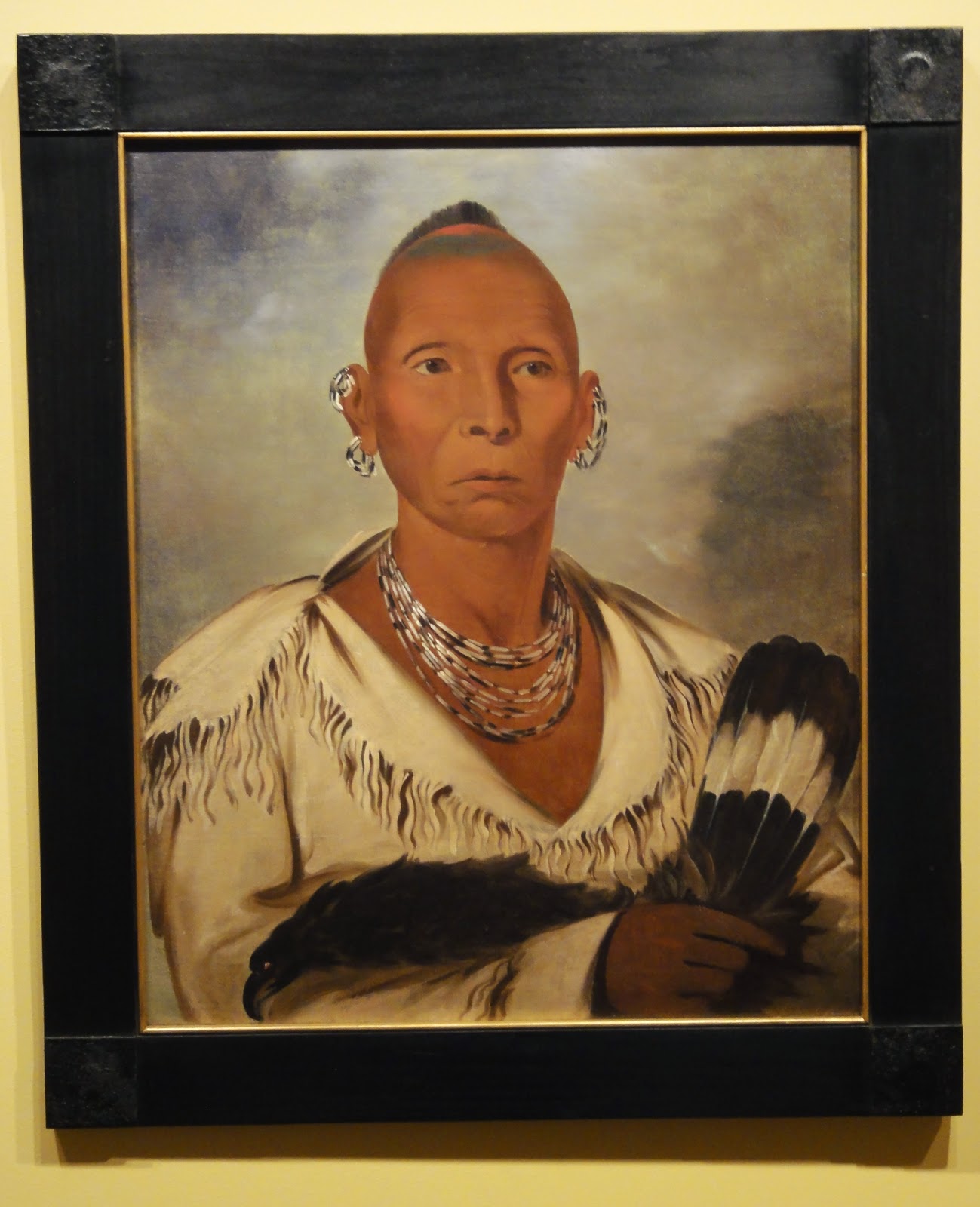Sunday, June 17, 2001, Florence:
The Accademia Gallery also
contains many wonderful Florentine and Sienese paintings. The galleries where these works are displayed
offer a welcome respite from the hubbub of the 'David' gallery and we were able
to enjoy them in relative serenity.
 |
Painting gallery at the Accademia Gallery, Florence
with plaster model 'Rape of the Sabine Women' by Giambologna in center.
Photo from internet. |
After the Accademia,
we walked over to the Piazza San Marco in hopes that the monastery where Fra
Angelico’s frescoes are preserved would be open.
 |
Church of San Marco on Piazza San Marco, Florence. The neo-classical facade is from 1778.
The monastery attached to the church has cells decorated with frescoes by Fra Angelico.
Photo by Blomme-McClure |
Unfortunately, San Marco was closed, but we stopped
at a lovely outdoor restaurant on the piazza for tramezinni (sandwiches) and cold drinks.
After lunch we went to the
Medici Chapels attached to the church of San Lorenzo. The 'old' chapel (Cappella dei Principi) is
quite large – octagonal with walls in shades of grey marble inlaid with Medici
coats of arms done in semi-precious colored stones. The frescoes on the dome are unattributed in
the guidebooks we were carrying, but they are a dramatically colorful cap above
the sobriety of the walls and floor.
The
'Sagrestia Nuovo' in San Lorenzo is, of course, designed by Michaelangelo and contains
sculptures that he created for the tombs of two of the Medici -- Lorenzo, Duke of Urbino and Guiliano, Duke of Nemours. The chapel was under renovation when we were there with a huge
work shaft going up through the center. It was impossible to enjoy the
balanced proportions of the architecture, but the sculptures remained available and are very powerful. They include full-size portraits of the
two Medici brothers, 'Night' and 'Day' (below Guiliano), 'Dawn' and 'Dusk' (below Lorenzo), and a wonderful 'Madonna
& Child' flanked by Saints Cosma and Damian. It was intriguing to note
that Michaelangelo had left the madonna’s feet unfinished. In fact, he left the entire chapel unfinished -- leaving for Rome and the Sistine Chapel ceiling before this commisson was completed.
Leaving the Medici
Chapels we walked across the Ponte Vecchio (always crowded with American
tourists) and climbed the hill to the Piazzale Michelangelo. The piazza was filled with tourist buses
disgorging hordes of tourists. If you
can ignore the Japanese tourists crowding each other for the best view point
for snapping pictures of one another, the view down and across the Arno to the
domes and turrets of the city and the mountains beyond is breathtaking.
 |
View of Florence from Piazzale Michelangelo with (left to right) Ponte Vecchio over Arno,
Palazzo Vecchio, San Lorenzo, Campanile and Duomo,. Photo by Blomme-McClure |
Like everyone else, we took pictures of one another and also pictures of
the copy of Michelangelo's 'David' in bronze on a pedestal with bronze replicas of 'Night',
'Day', 'Dawn', and 'Dusk' from the Medici Chapels clustered below. (If you aren't allowed to take photographs inside the Accademia and San Lorenzo, this is the next best thing.)
 |
Bronze copy of Michelangelo's 'David' surrounded by copies of figures from
his Medici tombs, Piazzale Michelangelo, Florence. Photo by Blomme-McClure |
Then, unlike nearly
everyone else at the Piazzale, we climbed further up the hill to the church of San Miniato
al Monte. It is a Romanesque jewel built into the hillside with a lower nave and raised apse. The façade is in the Florentine style with
green and white marble in geometric patterns – five Romanesque arches
surmounted by a high pediment with inset mosaics and topped by an eagle (symbol of the cloth merchants guild -- responsible for the upkeep of the church).
 |
| Facade of San Miniato al Monte, Florence. Photo by Blomme-McClure |
There are several lovely mosaics, frescoes and statues inside.
 |
| Interior of San Miniato al Monte, Florence. Photo by Blomme-McClure |
 |
Freestanding 'Chapel of the Crucifix' by Michelozzo, San Miniato al Monte, Florence.
Photo by Blomme-McClure |
 |
Romanesque mosaic of Christ with the Virgin and saints above the apse from 1297 A.D.
Photo by Blomme-McClure |
The view out over Florence from the terrace at
the top of the long staircase is even better than from the Piazzale and nearly
deserted -- in contrast to the chaotic tourist crowds on the Piazzale.
 |
| View of Florence from San Miniato al Monte with (from left to right): tower of Palazzo Vecchio, dome of San Lorenzo, Baptistry, Capanile, and Duomo. Photo by Blomme-McClure |
After pausing in the
relative peace of the terraces above the old cemetery we walked down to a café
midway between the church and the Piazzale for granitas on a terrace
overlooking the city. Then we took a
different route down a long sloping ramp into the city then back across the
Arno to our hotel.
Since it was Sunday, the
restaurants that we knew from our guidebooks and friends were either closed or
already booked. So we asked the evening
concierge to make a reservation at a comfortable, moderately priced spot. He suggested with Osteria 'Natalino' (Borgo degli Albizi 17r, Firenze; 055/289404; http://www.ristorantenatalino.com/) which turned out to be a real gem. The food was delicious and we all fell for our waiter – a tall, handsome, well-built young man with a short
black beard framing a delightful smile and dancing black eyes. As we ate dinner in the outdoor café, we
became aware that all of his customers, male and female, were equally
enthralled. It was a delightful end to a
lovely day.









































.jpg)










